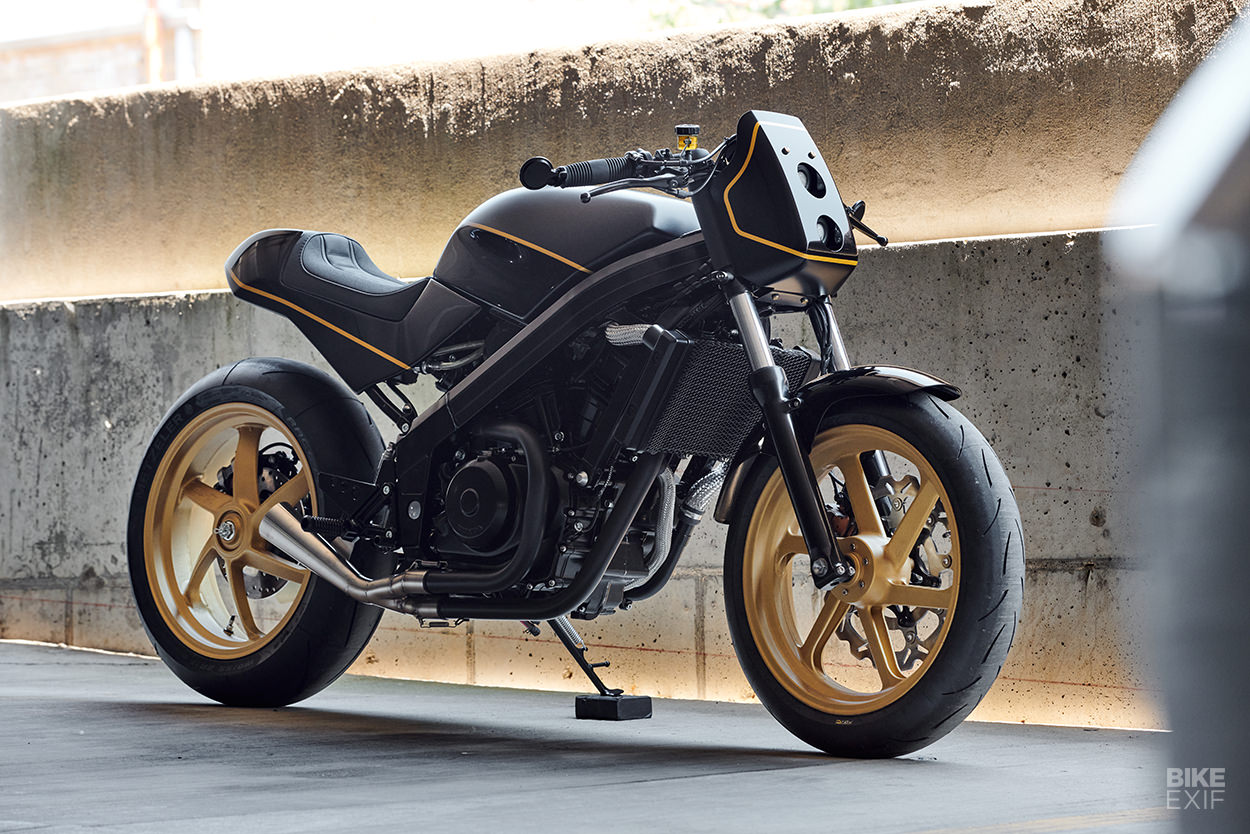
For some people, custom motorcycles are just a hobby. But for others, they put food on the table—and that’s when it pays to have a good measure of business savvy.
Tony Prust gets it; he runs a tight ship at his shop, Analog Motorcycles. Every new customer gets directed to an online inquiry form, so that Tony knows exactly what he or she wants, and what they hope to spend. And since he prides himself on quality, he’s selective on what he takes on, too.
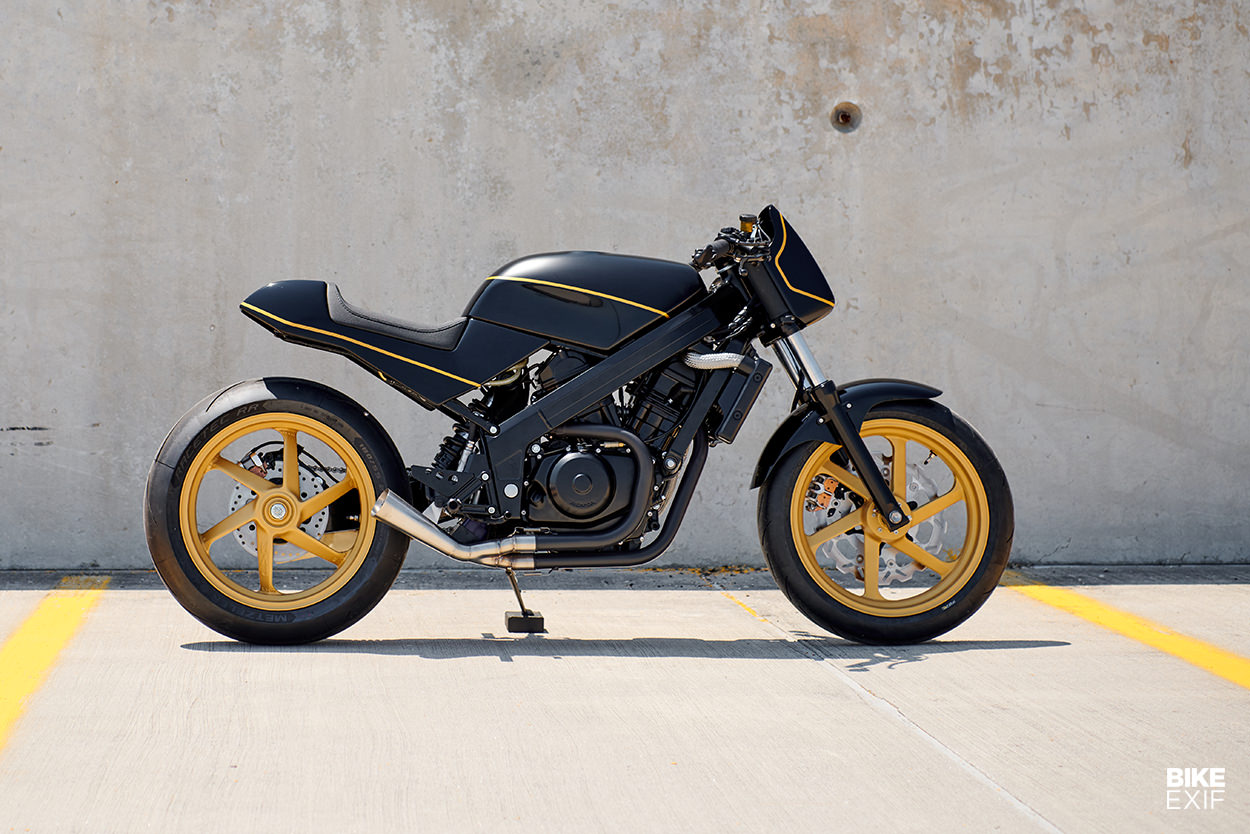
That’s also why this project almost didn’t happen. Todd, a long-time Analog fan, had finally decided to pull the trigger on a build—but Tony wasn’t overly enthused at his choice of donor, a 1988 Honda Hawk GT NT650.
“We like to stick to builds that fit our brand,” Tony explains. “When Todd mentioned he wanted to do a Hawk build, I was a bit hesitant. The 80s in my opinion are not the best years for motorcycles.”
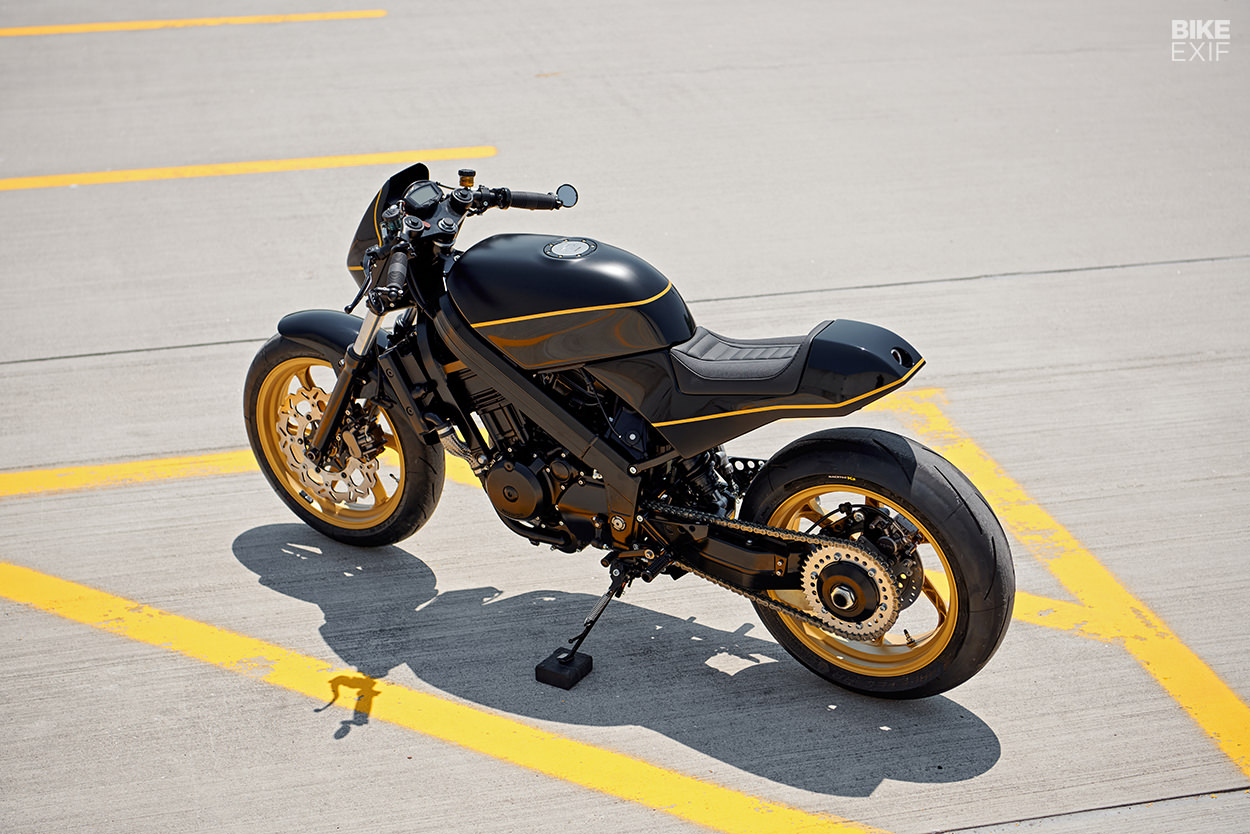
“I know the Honda Hawk has a bit of a cult following from diehard enthusiasts. And it was only a three-year run, so they are not that common. Todd was very convincing in insisting I do it ‘Analog style,’ and that I would have creative control.
“He has owned the bike a long time, and just really loved it and wanted it to be the donor.”
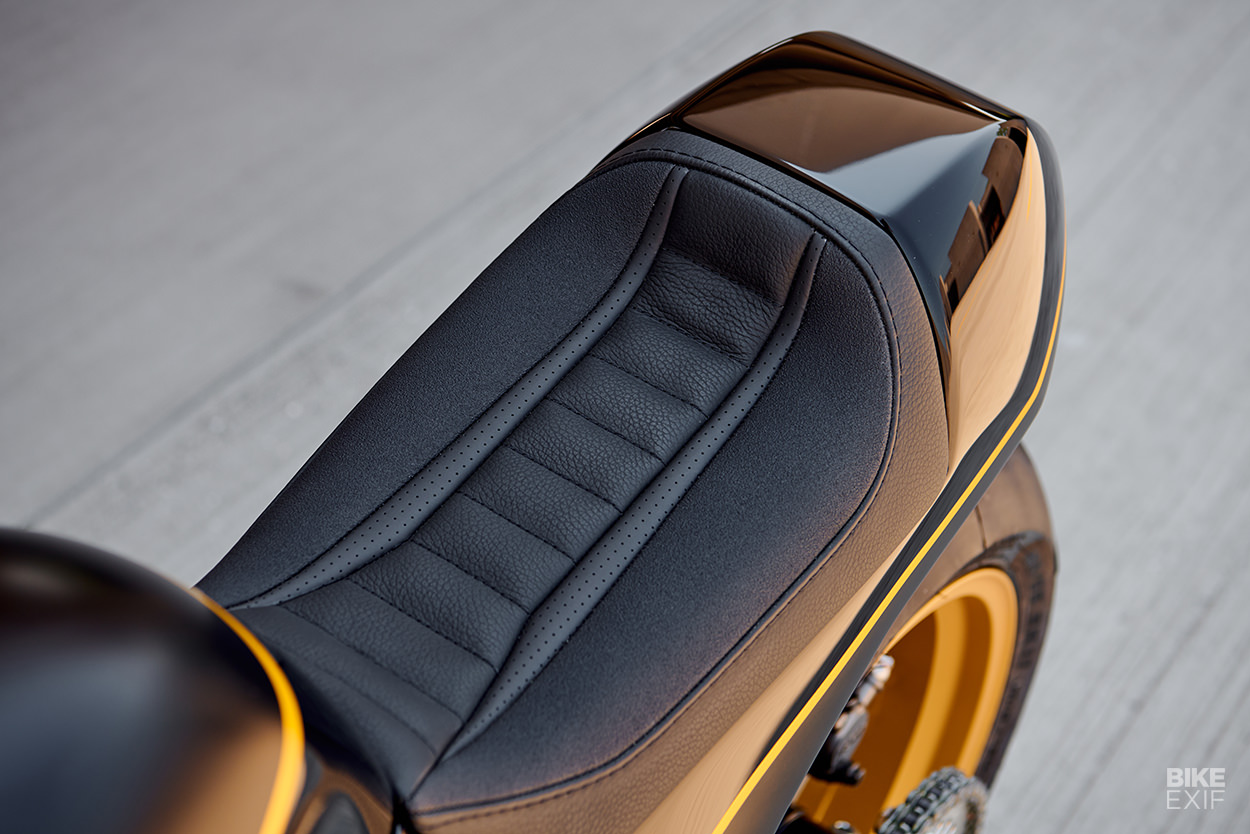
Analog had a two-year waiting list at the time too, but Todd was willing to wait. So Tony relented, a budget was set, and the Hawk was booked in.
Despite never selling well in the US, the Hawk was a respectable motorcycle—cramming decent enough performance into a compact package. It also came with the ‘Pro-Arm’ cast aluminum swing arm design that debuted on the Honda RC30, a twin spar aluminum box frame, and a pair of distinctly 80s split-three-spoke wheels.
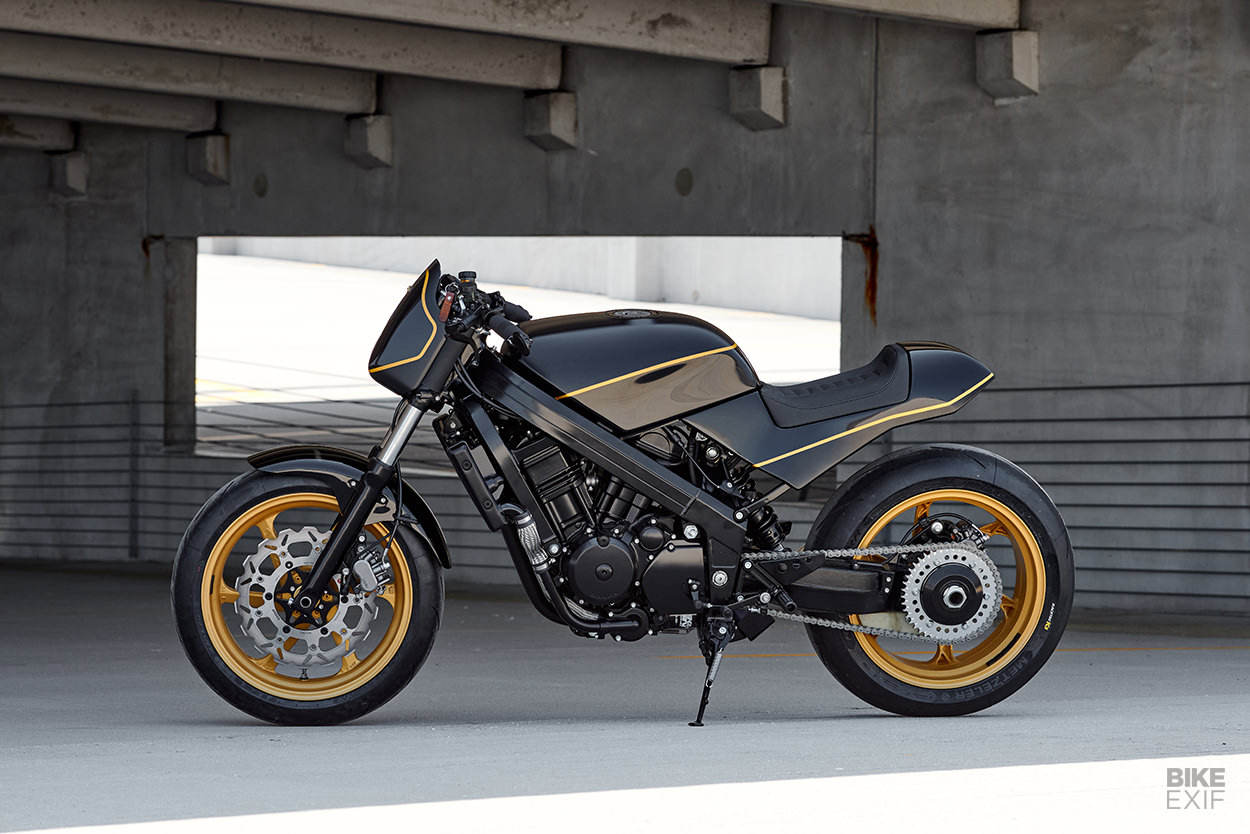
“The rims had to go,” says Tony, “so we started there.”
Luckily a longtime friend and customer of Tony’s had a set of 17-inch PVM magnesium race wheels for the Honda RC30 in his collection, so an offer was made on those. Adapting them to the Hawk wasn’t easy though, so Analog had to call in a local machine shop, Chassis Services, to help out.
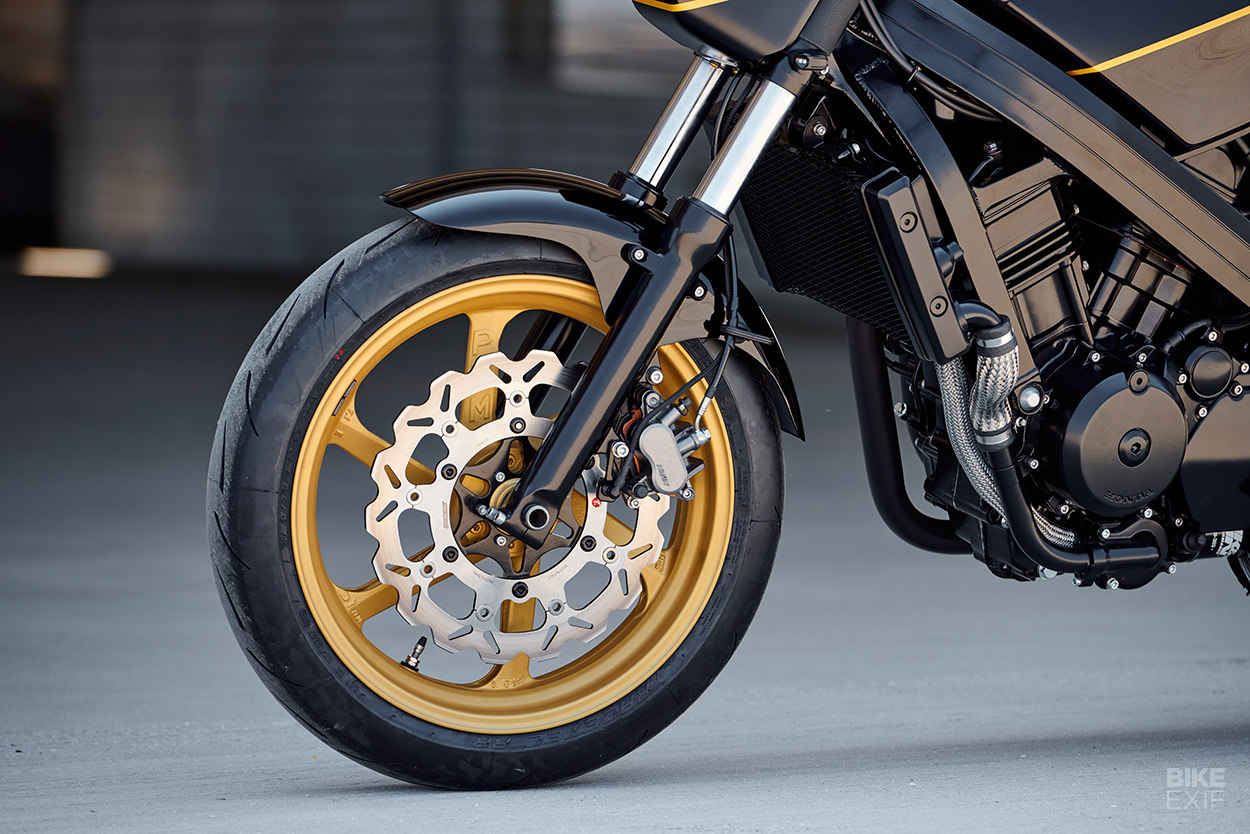
The job involved special tooling, and a very slow and accurate drilling process. The front wheel also needed a custom machined front rotor carrier.
But once the wheels were on, along with a set of Metzeler Racetec RR tires, the Analog team started to see potential in the Hawk. So they kept working on the stance, lowering the forks by 1.5 inches, and retrofitting them with new Race Tech Gold Valve emulators. The stock rear shock was refurbished too.
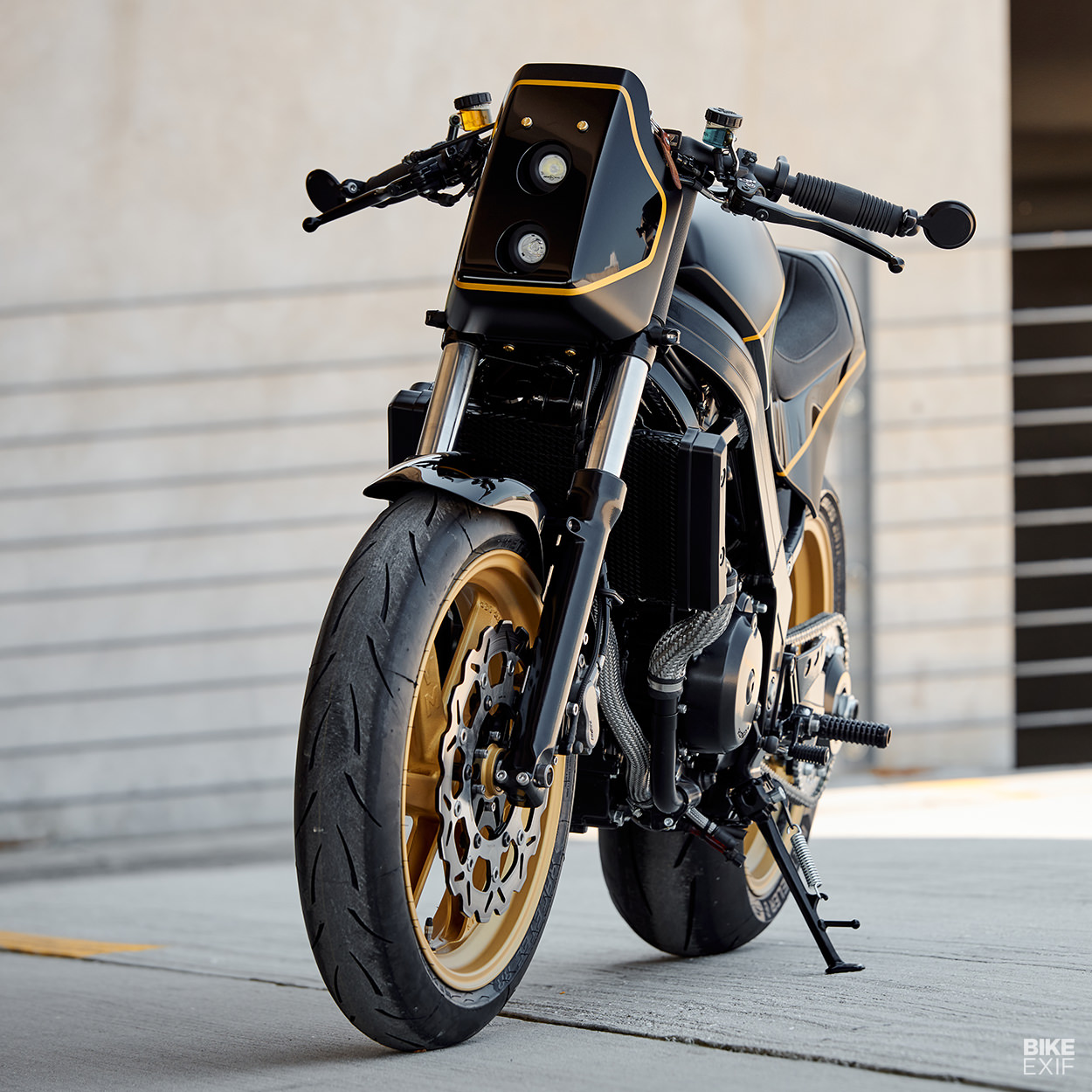
Halfway through the project, Todd fired off an email saying that he wanted the motor all-black. So Analog did something they didn’t originally intend to do: a full rebuild on the 647 cc, 52° v-twin, taking it back to factory spec.
Because “the only way to black out an engine is a full tear down, get everything powder coated individually, and then put it back together.”
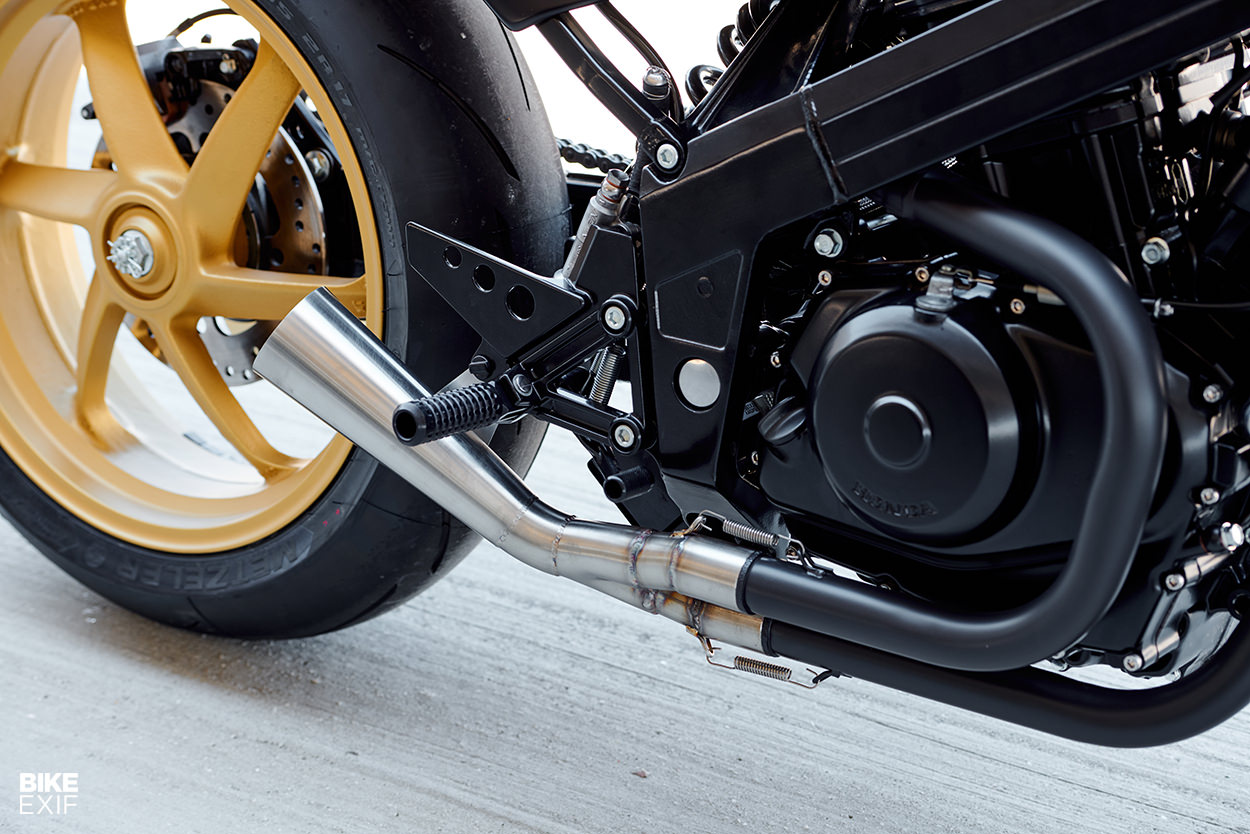
The motor was also tuned with a Stage Two carb jet kit, and now exhales via a custom two-into-one exhaust system, with a muffler from Cone Engineering. Analog took care of the smaller touches too, like WireCare stainless steel sleeving on all the hoses.
Next up was the Hawk’s bodywork. The team kept the OEM fuel tank, but hammered out an aluminum tailpiece, made up of about five different sections. It sits on a modified subframe, with the electronics neatly packaged underneath, wired around a Motogadget m.unit controller and an Earth X Lithium-ion battery.

To complete the new profile created by the revised tailpiece, Analog shaped a small nose fairing for the front. It hosts a pair of embedded Denali D2 LEDs, and there’s a recessed Analog Motor Goods taillight out back to echo the detail. The bodywork’s capped off with a custom seat, upholstered by PlzBeSeated.
“We just kept tailoring,” says Tony, “until as much of the 80s was washed away, and it fit the Analog Motorcycles custom benchmark.”
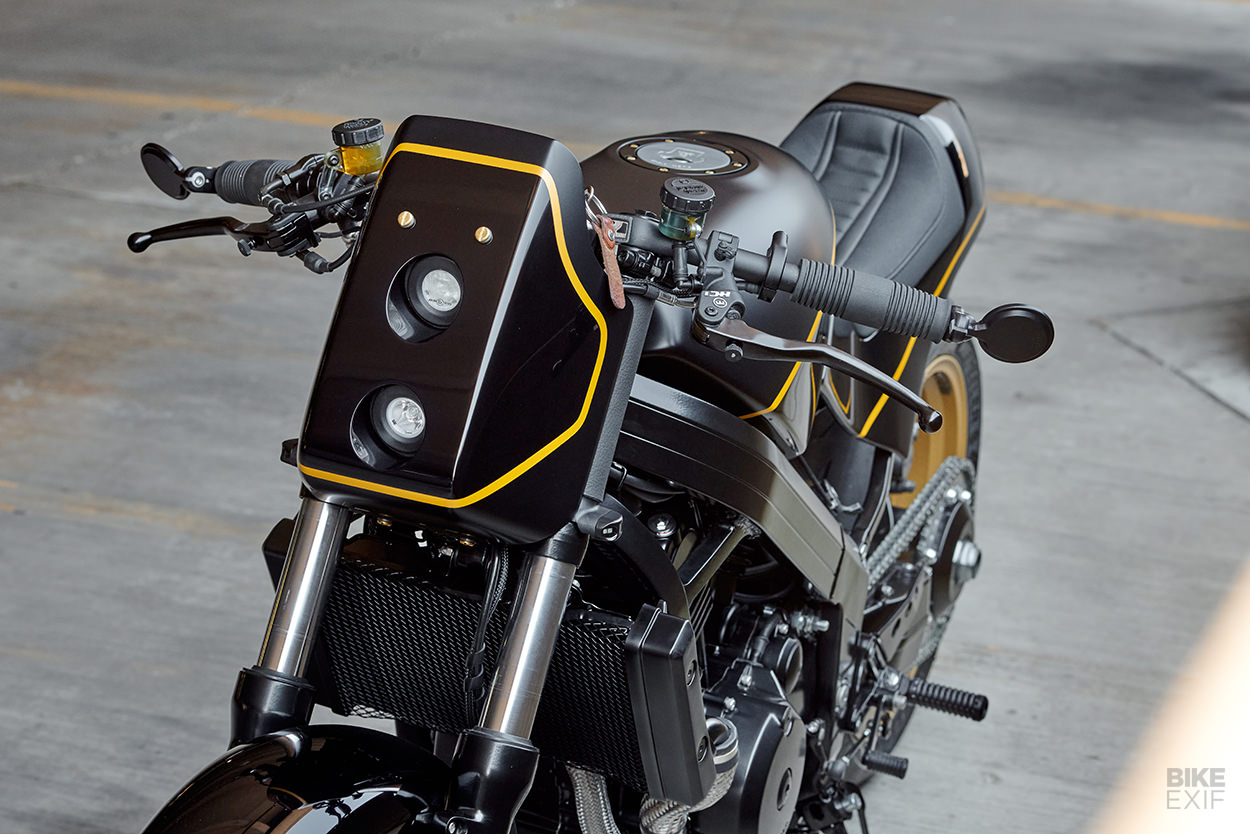
The Hawk’s cockpit wasn’t neglected either. Analog top-mounted a pair of stunning clip-ons from Messner Moto, capped off with new grips and a set of CRG mirrors. They also added Magura controls (along with a hydraulic clutch conversion), Messner Moto switches, and a Koso speedo.
Finishing touches include custom CNC-machined foot pegs, and a set of Analog’s own ‘signal pod’ turn signals.
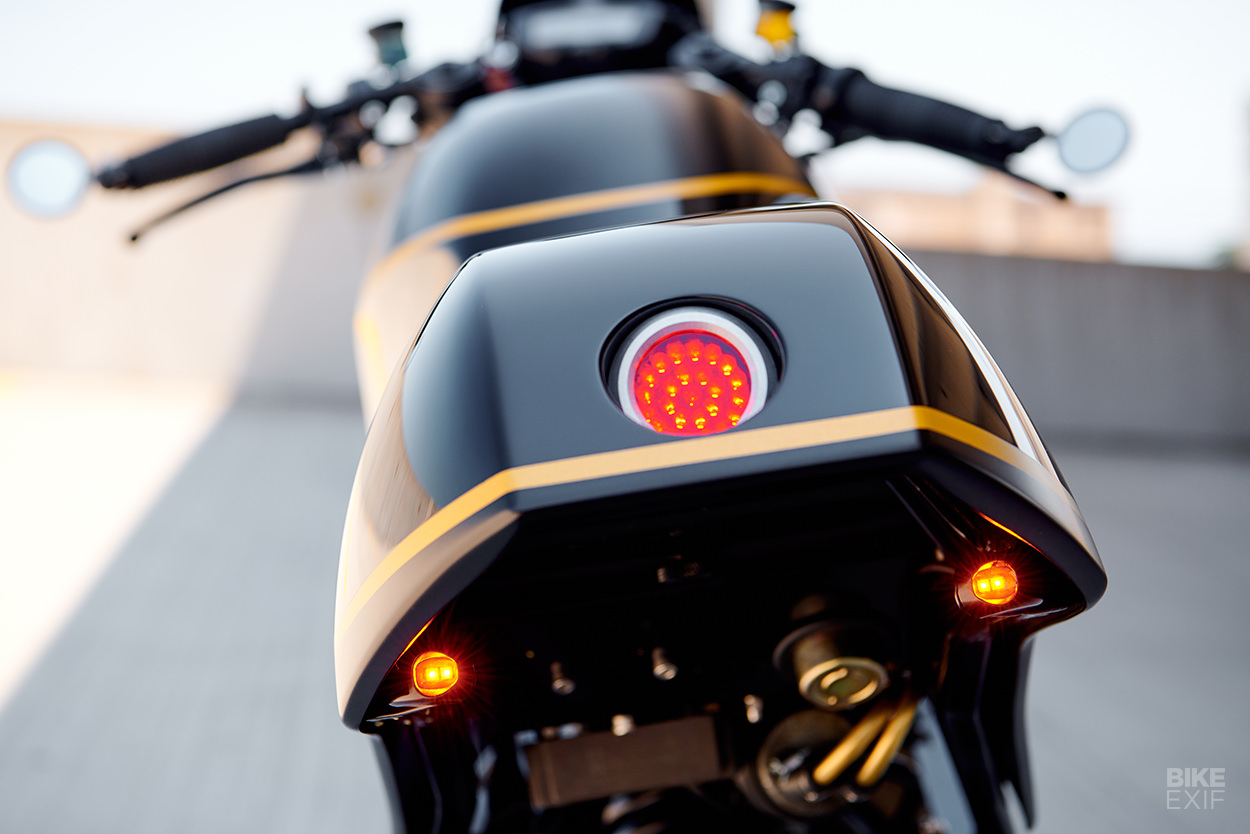
The final design maintains some of the Hawk’s quirkiness, but looks miles better. And that slick black and gold livery doesn’t hurt either. Ron Siminak laid down the paint, finishing it off with a flat clear coat, before certain sections were wet sanded and buffed to a gloss finish.
According to Tony, it goes as good as it looks too. “The Hawk is really fun to ride and sounds like a mini MotoGP machine. Neighbors beware, this ‘Bird of Play’ is looking to have a good time!”
Analog Motorcycles | Facebook | Instagram | Images by Daniel Peter
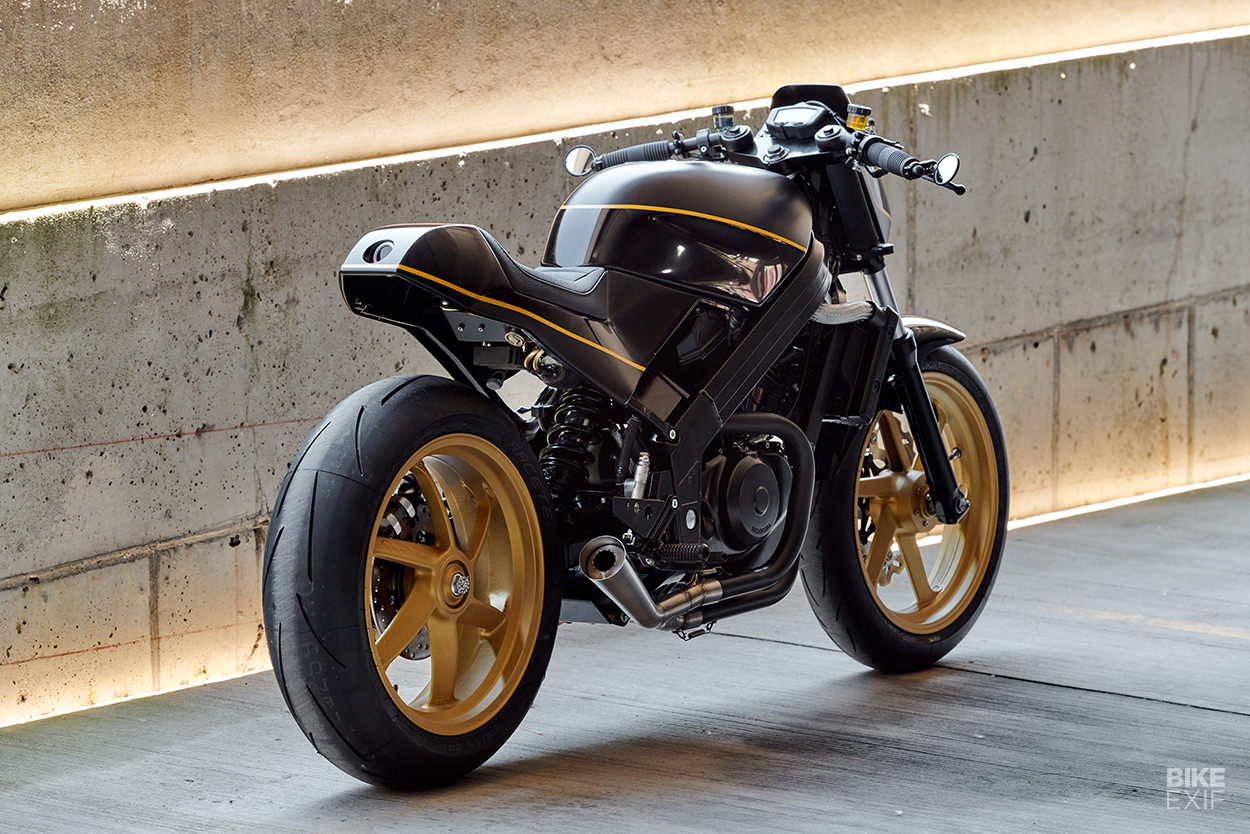
from Bike EXIF https://ift.tt/2YrBVYz
No comments:
Post a Comment